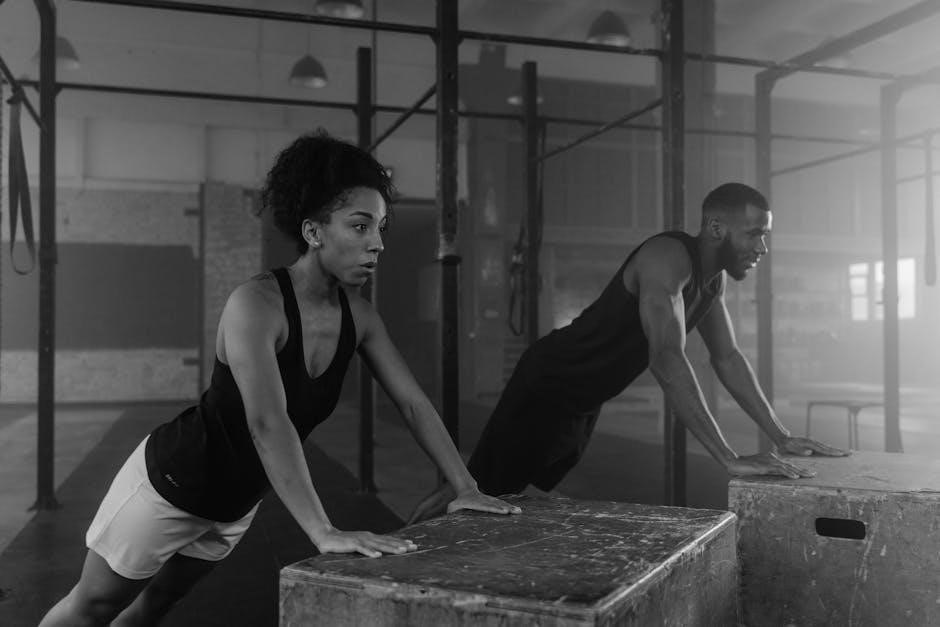Welcome to the ultimate guide for understanding men’s sizes. This section helps you navigate clothing and shoe measurements, ensuring a perfect fit for comfort and style.
Understanding the Importance of Proper Fit
A well-fitting garment enhances comfort, confidence, and style. Proper fit ensures freedom of movement and avoids health issues like restricted breathing or poor posture. Clothing that is too tight or too loose can be uncomfortable and unflattering. Understanding your measurements helps you choose sizes that align with your body proportions, ensuring a polished look and optimal comfort. Accurate sizing also prevents unnecessary returns and exchanges, making shopping more efficient. Prioritize proper fit to enjoy both functionality and aesthetics in your wardrobe.
Overview of Key Measurements for Men’s Clothing
Key measurements for men’s clothing include chest, waist, hips, and sometimes neck and sleeve length. Chest measurement determines shirt and jacket sizes, while waist measurement is crucial for pants and shorts. Hip measurements ensure proper fit in pants and shorts. Understanding these measurements helps in selecting sizes that align with your body proportions. International sizing systems vary, so consulting a size guide is essential. Accurate measurements ensure comfort, style, and avoid the hassle of returns or exchanges.
Key Measurements for Men’s Clothing
Chest, waist, and hip measurements are essential for determining sizes. They ensure proper fit for shirts, jackets, pants, and shorts, providing comfort and style across all clothing items.
Chest Measurement: How to Measure Correctly
The chest measurement is taken horizontally around the widest part of your bust, ensuring the tape measure is level and not too tight or too loose. Stand upright, place the tape under your arms, and position it mid-level across your chest. The tape should be parallel to the floor for an accurate reading. This measurement is crucial for determining sizes for shirts, jackets, and other garments. For the best fit, measure over thin clothing, like a t-shirt, to ensure precision and comfort.
Waist Measurement: Finding Your Ideal Size
Your waist measurement is taken at the narrowest point of your torso, typically just above the hipbone or midway between your ribs and hips. Stand straight and wrap the tape measure horizontally around your natural waistline, ensuring it’s not too tight or loose. This measurement is critical for determining sizes for pants, shorts, and shirts. For accuracy, measure over lightweight clothing. If your waist falls between sizes, consider the larger size for comfort and a proper fit. Always check brand-specific guides, as sizing can vary slightly between brands.
Hip Measurement: Importance for Pants and Shorts
Your hip measurement is taken around the widest part of your hips, typically 7-9 inches (18-23 cm) below your natural waistline. This measurement is crucial for ensuring a proper fit in pants, shorts, and skirts. Stand straight and wrap the tape measure horizontally, keeping it level and not too tight. Accurate hip measurements help determine the best fit for your lower half, ensuring comfort and style. For pants and shorts, this measurement ensures the garment sits comfortably and aligns well with your body shape. Always double-check your measurements for accuracy.
International Sizing Systems for Men
Men’s clothing sizes vary globally, with different standards in Europe, the US, and the UK. Understanding these systems ensures the right fit when shopping internationally.
European vs. US vs. UK Sizing: What You Need to Know
Men’s clothing sizes differ significantly across Europe, the US, and the UK. European sizes often run smaller than US sizes, while UK sizes align closely with European measurements. For instance, a chest measurement of 97-102 cm corresponds to a Medium in Europe, a Large in the US, and a Medium in the UK. Understanding these variations is crucial for international shopping to ensure the best fit. Always refer to the specific size charts provided by retailers to avoid discrepancies.
Understanding Size Labels: XS, S, M, L, XL, etc.
Men’s clothing sizes are labeled as XS, S, M, L, XL, etc., representing a standardized fit. These labels correspond to body measurements, ensuring a consistent fit across brands. While sizes are generally standardized, slight variations exist between brands and regions. Always refer to the specific size chart provided by the retailer to ensure accuracy. If your measurements fall between sizes, consider sizing up for comfort. This system simplifies shopping, making it easier to find the perfect fit for your body type and style preferences.
How to Measure Yourself Accurately
Use a flexible tape measure, keep it level, and measure over lightweight clothing. Stand straight, relax, and avoid pulling the tape too tight for precise results.
Tools and Tips for Taking Body Measurements
Accurate body measurements require the right tools and techniques. Use a flexible tape measure, ensuring it’s level and not too tight. Measure over lightweight clothing or directly on the skin for precise results. Stand straight, relax your muscles, and avoid slouching. For chest measurements, place the tape under your arms, across the fullest part of your chest, and breathe naturally. Waist measurements should be taken at the narrowest point, and hip measurements around the widest part of your hips. Use a full-length mirror to check the tape’s position. Take multiple measurements to ensure consistency and accuracy. Record your measurements to track changes and compare with size charts for the best fit.
Common Mistakes to Avoid When Measuring
When measuring for clothing, avoid common errors for accurate results. Ensure the tape measure is flexible and not too tight or loose. Do not measure over bulky clothing, as this can distort results. Stand upright and avoid slouching, as this misaligns measurements. Do not forget to measure at the widest points of your chest, waist, and hips. Additionally, avoid rushing and take multiple measurements to ensure consistency. Use a mirror to verify the tape’s position, and always record your measurements to track changes over time.

Shoe Size Guide for Men
Discover the perfect fit with our shoe size guide, ensuring comfort and style. Proper fit is crucial for footwear, so use size charts to find your ideal match.
Understanding Shoe Size Charts Across Brands
Shoe sizes vary across brands due to differences in materials, designs, and fits. Always refer to the specific brand’s size chart, as a size in one brand may not fit the same in another. Measure your foot length and compare it to the brand’s measurements for accuracy. Some brands offer “calculate your size” features for better accuracy. Remember, proper fit ensures comfort and support, so take the time to find your ideal match.
How to Choose the Right Shoe Size for Comfort and Fit
Choosing the right shoe size involves measuring your foot accurately and considering the fit. Use a ruler or Brannock device to measure foot length and width. Try shoes in the afternoon, as feet swell during the day. Wear the same type of socks you plan to use with the shoes. Ensure there’s about half an inch of space between your longest toe and the shoe tip. The heel should fit snugly without slipping. Walk around to check comfort and support. Different brands may vary, so try multiple sizes if needed for the best fit.

Additional Considerations for Fit
Fabric type, stretch, and personal comfort preferences play a crucial role in achieving the perfect fit. Always check size guides on websites for accurate measurements.
Importance of Fabric and Stretch in Clothing
Fabric type and stretch significantly impact comfort and fit. Natural fibers like cotton offer breathability, while synthetic materials provide elasticity. Clothes with stretch retain shape better and allow greater mobility.
- Fabric choice affects both durability and comfort;
- Stretch fabrics enhance movement and reduce restriction.
- Combining fabric type with personal preferences ensures optimal fit.
Understanding fabric properties helps in selecting garments that meet lifestyle needs and ensure lasting comfort.
How to Use a Size Guide on a Website
Using a size guide on a website is straightforward. Look for the “Size Guide” link on the product page and click to view measurements. Compare your body measurements with the chart to find your best fit. Use filters to narrow down sizes based on your preferences. Ensure accurate measurements by using a flexible tape measure. Consider fabric stretch and personal comfort when selecting sizes. This tool helps minimize returns and ensures a perfect fit for your body type and style preferences.

Brand-Specific Size Guides
Popular brands like ASOS and Tommy Hilfiger offer detailed size charts tailored to their designs. These guides provide precise measurements and tips for accurate sizing.
Examples from Popular Brands Like ASOS and Tommy Hilfiger
ASOS provides detailed size charts for clothing and shoes, ensuring accurate fits. Tommy Hilfiger offers specific measurements for pants, shirts, and more. Both brands emphasize proper sizing to avoid returns. Their guides often include chest, waist, and hip measurements, tailored to their unique designs. ASOS also features a size calculator for personalized recommendations. Tommy Hilfiger’s tables cater to international sizing, making it easier for global customers to find their perfect fit. These tools highlight the importance of brand-specific sizing for optimal comfort and style.

Frequently Asked Questions (FAQ)
Common questions include handling measurements between sizes and ensuring online fit. Choose the larger size for comfort and use detailed size guides for accuracy.
What to Do If Your Measurements Fall Between Sizes
If your measurements fall between sizes, opt for the larger size for comfort. Use size calculators on websites and consider fabric stretch. Check brand-specific guides for accuracy.
How to Ensure the Best Fit When Shopping Online
To ensure the best fit when shopping online, always check the size chart for each brand. Use the “Calculate Your Size” feature if available. Consider fabric stretch and read product reviews for fit feedback. If unsure, size up for comfort. Double-check measurements and compare with similar garments you own. Contact customer service for sizing inquiries to avoid returns and ensure satisfaction with your purchase.
Mastering your perfect fit is achievable with the right measurements and size guides. Confidence and style start with clothes that fit well, enhancing your wardrobe experience.
The Ultimate Guide to Finding Your Perfect Size
Accurate measurements and understanding size charts are key to finding your ideal fit. Use a tape measure to determine your chest, waist, and hip sizes. Consider body proportions and fabric stretch for comfort. Always refer to brand-specific guides, as sizing can vary. Avoid common mistakes like not re-measuring regularly or ignoring international size differences. By following these steps, you’ll ensure a flattering, comfortable fit for all your clothing and footwear needs, enhancing your style and confidence.
Final Tips for a Comfortable and Stylish Wardrobe
A well-fitting wardrobe begins with precise measurements and understanding your body type. Always consider fabric stretch and style when selecting sizes. Refer to brand-specific guides, as sizing can vary. Avoid assumptions—measure regularly and compare with size charts. For the best fit, try clothes on if possible. Prioritize comfort and confidence, as these elevate your style. By combining these tips, you’ll build a wardrobe that flatters your physique and keeps you looking sharp and relaxed all day long.

